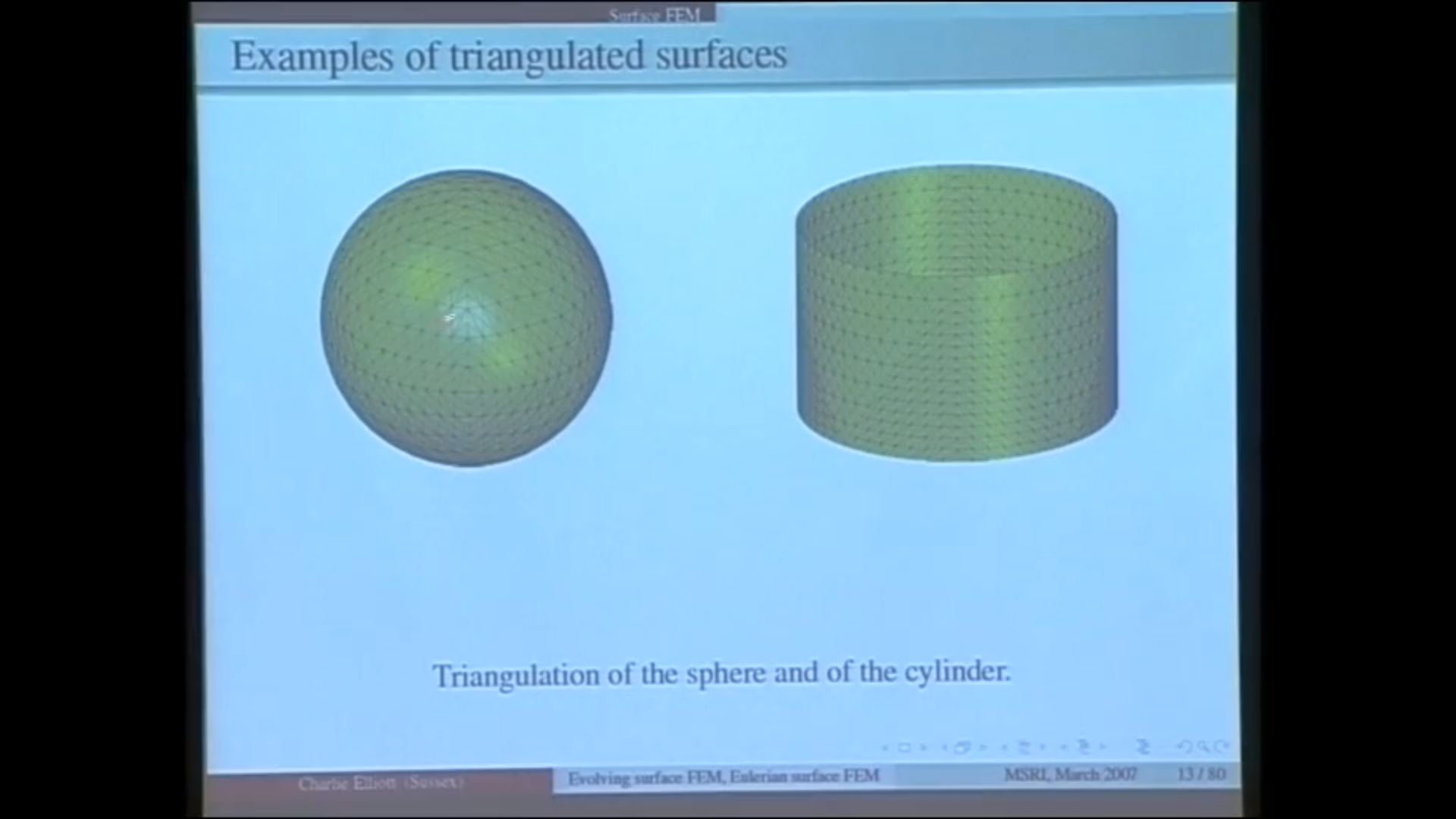Finite element methods for evolutionary surface PDEs
Presenter
March 16, 2007
Keywords:
- PDEs on manifolds
- geometric evolution equations
- conservation laws
- diffusion equation
- evolving surfaces
- Leibniz rule (differentiation under the integral sign)
- materials science
- finite element analysis
- nanoporosity
- dealloying metals
- bio-membrane surfaces
MSC:
- 65M60
- 65M55
- 65M50
- 65M22
- 65M12
- 65Mxx
- 65-xx
- 74S05
- 74Sxx
- 74-xx
- 74K15
- 74Kxx
- 74Mxx
Abstract
Besides their rich and intriguing features and dynamics, geometric evolution equations appear in many scientific, engineering and industrial applications. Numerical computation of geometric evolution equations is quite challenging due to dynamic deformation of geometry, nonlinearity and possible development of singularities, especially topological changes such as self-intersection, merging, pinching, splitting, and fattening. Recently, significant progress has been made in computational methods and algorithms for geometric evolution equations. Powerful numerical methods, which are based on the level set and the phase field methodologies and combine well-known discretization methods such as finite difference methods, finite element methods, finite volume methods and spectral methods with efficient solution methods such as adaptive mesh methods, multilevel methods and domain decomposition methods, have greatly increased the capability of computing solutions of complicated nonlinear geometric evolution equations, in particular, in higher dimensions.
